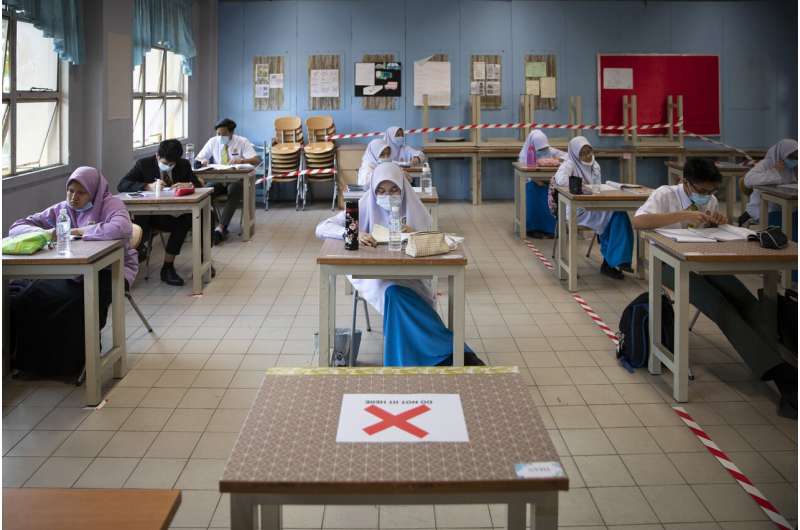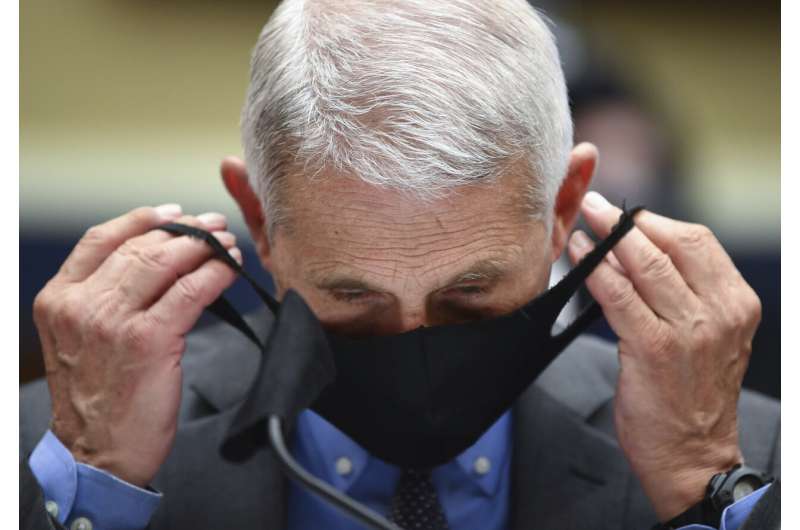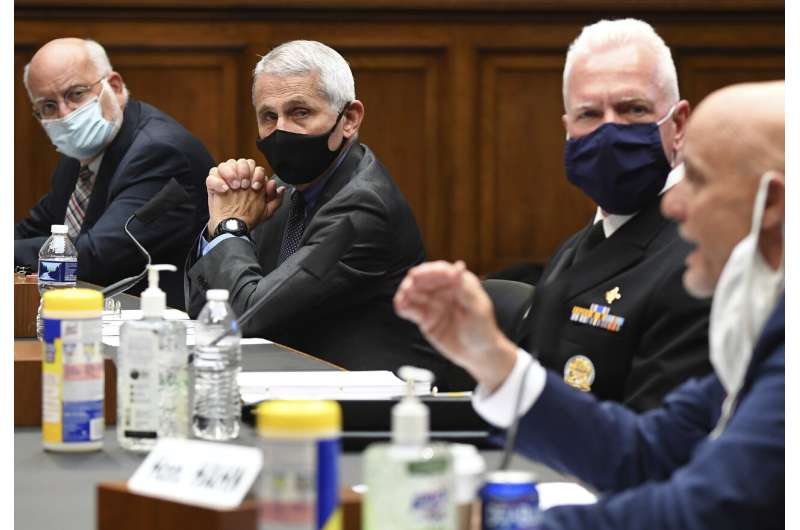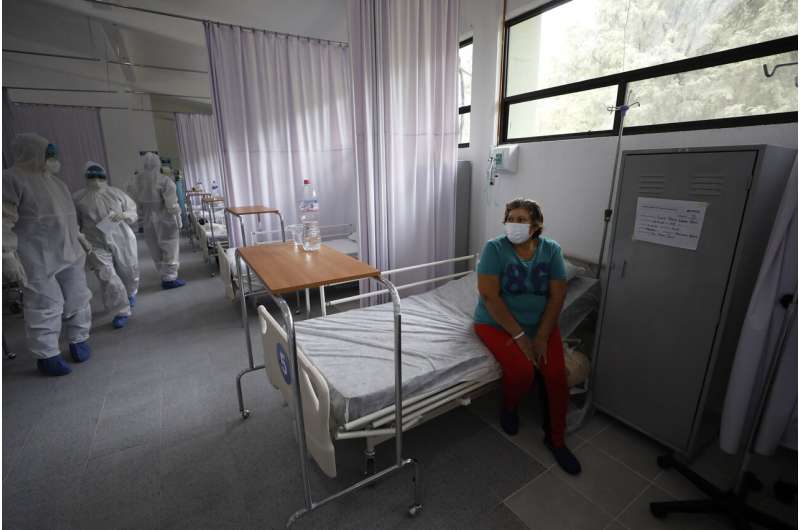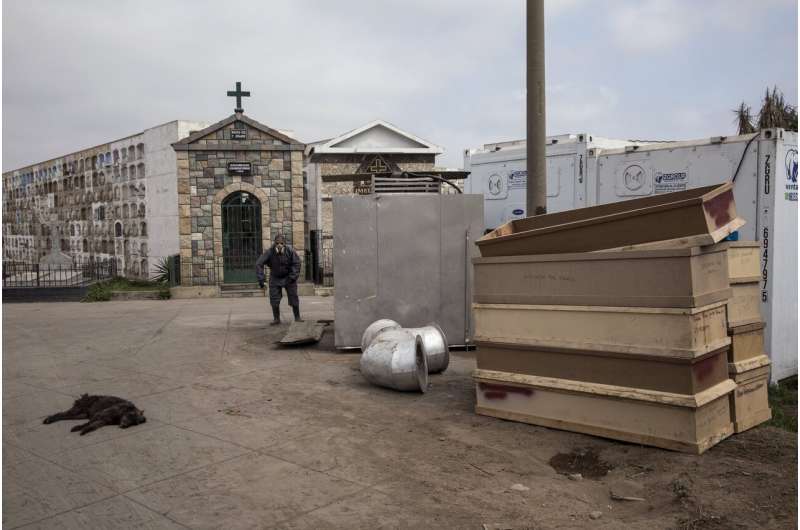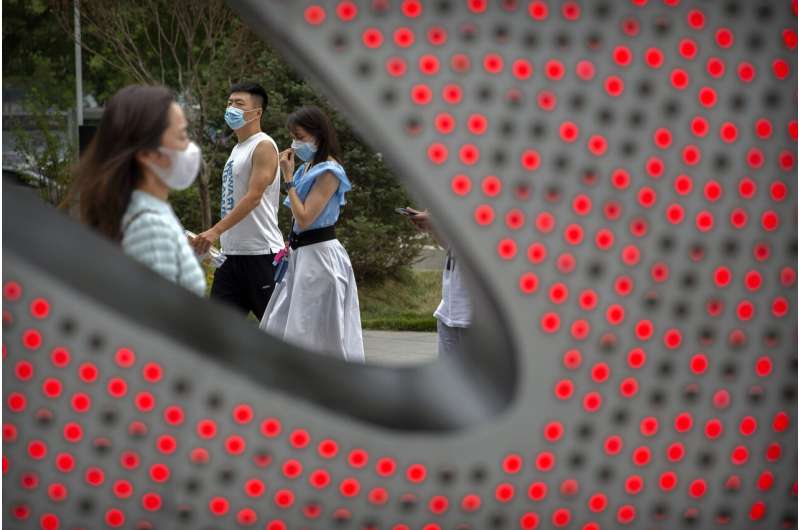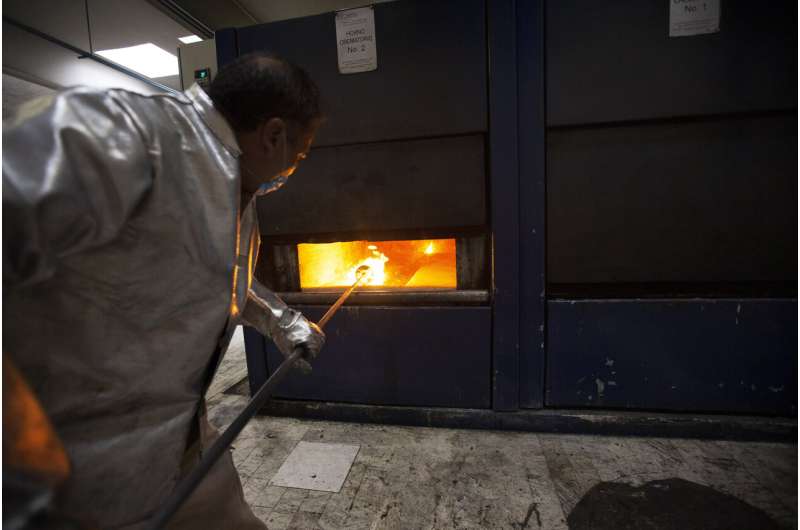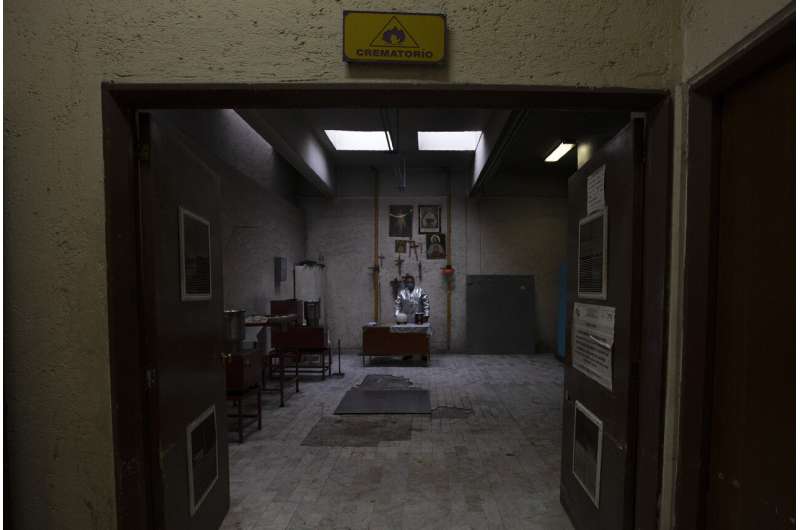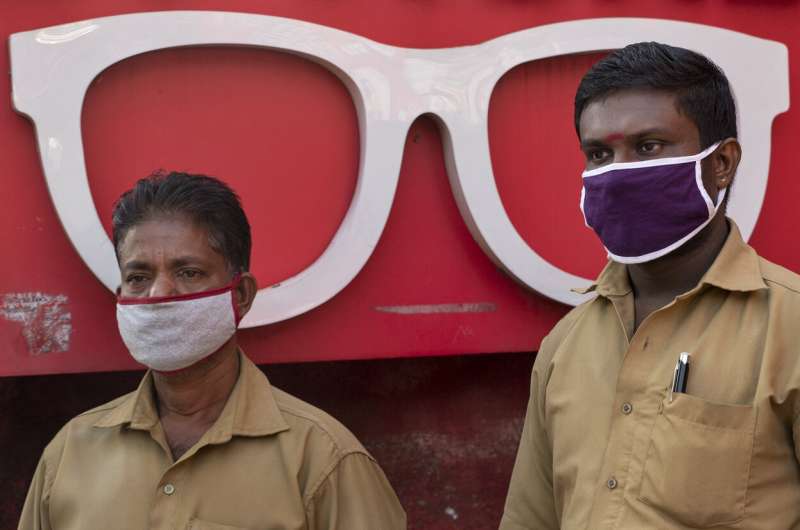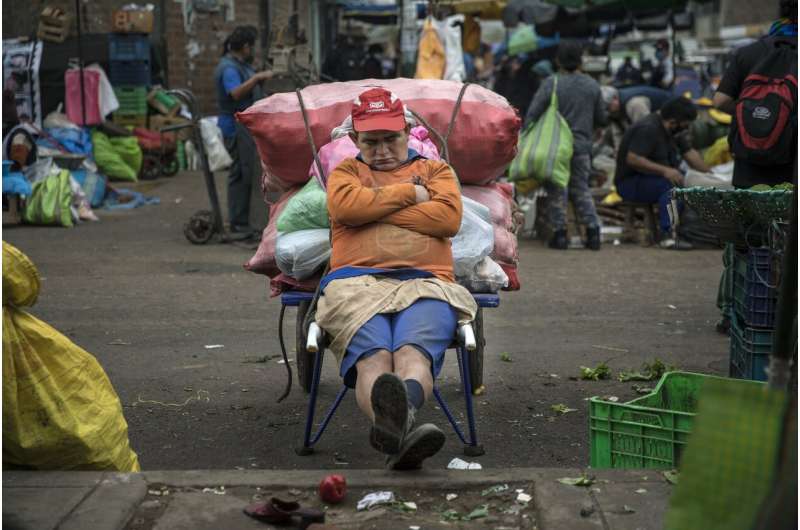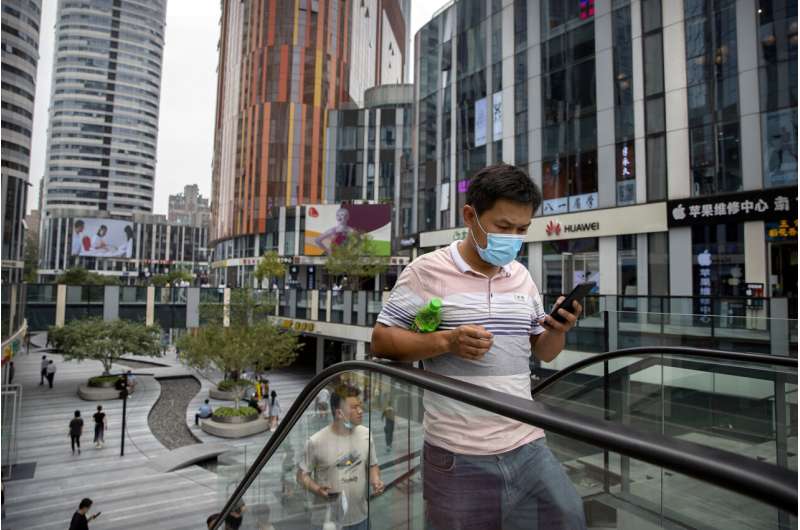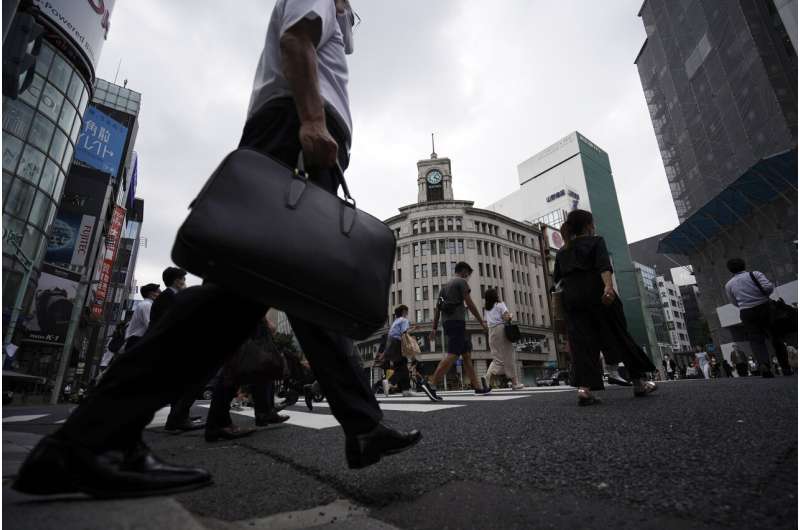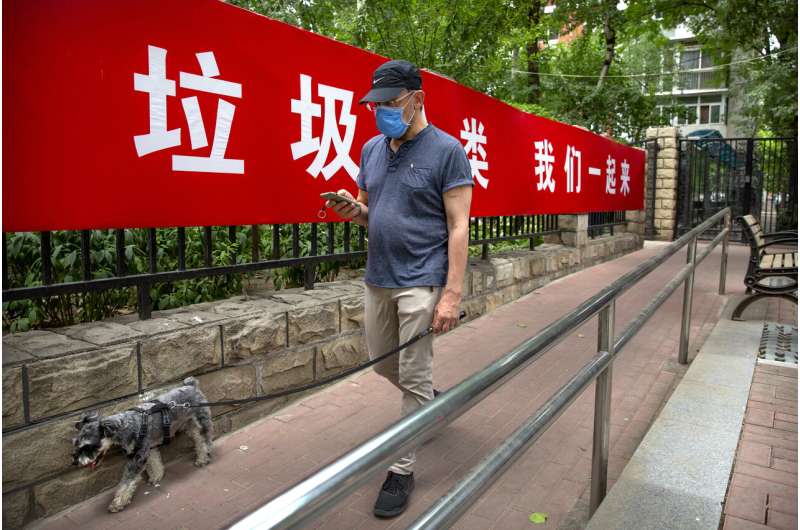Students wearing face masks and maintaining social distancing at a classroom during the first day of school reopening at a high school in Putrajaya, Malaysia, Wednesday, June 24, 2020. Malaysia began reopening schools Wednesday while entering the Recovery Movement Control Order (RMCO) after three months of coronavirus restrictions. (AP Photo/Vincent Thian)
New coronavirus cases in the U.S. have surged to their highest level in two months and are now back to where they were at the peak of the outbreak.
The U.S. on Tuesday reported 34,700 new cases of the virus, according to a tally compiled by Johns Hopkins University that was published Wednesday. There have been only two previous days that the U.S. has reported more cases: April 9 and April 24, when a record 36,400 cases were logged.
New cases in the U.S. have been surging for more than a week after trending down for more than six weeks. While early hot spots like New York and New Jersey have seen cases steadily decrease, the virus has been hitting the south and west. Several states on Tuesday set single-day records, including Arizona, California, Mississippi, Nevada and Texas.
Cases were also surging in other parts of the world. India reported a record daily increase of nearly 16,000 new cases. Mexico, where testing rates have been low, also set a record with more than 6,200 new cases.
But China appears to have tamed a new outbreak of the virus in Beijing, once again demonstrating its ability to quickly mobilize vast resources by testing nearly 2.5 million people in 11 days.
Director of the National Institute of Allergy and Infectious Diseases Dr. Anthony Fauci takes off his face mask before testifying before a House Committee on Energy and Commerce on the Trump administration's response to the COVID-19 pandemic on Capitol Hill in Washington on Tuesday, June 23, 2020. (Kevin Dietsch/Pool via AP)
In the U.S. state of Arizona, which on Tuesday reported a record 3,600 new infections, hundreds of young conservatives packed a megachurch to hear President Donald Trump's call for them to back his reelection bid.
As he did at a rally in Oklahoma over the weekend, Trump referred to the virus with a pejorative term directed at its emergence in China.
Ahead of the event, the Democratic mayor of Phoenix, Kate Gallego, made clear that she did not believe the speech could be safely held in her city—and urged the president to wear a face mask. He did not. Trump has refused to wear a mask in public, instead turning it into a red-vs.-blue cultural issue.
Earlier Tuesday, Dr. Anthony Fauci told Congress that the next few weeks are critical to tamping down the surge.
"Plan A, don't go in a crowd. Plan B, if you do, make sure you wear a mask," said Fauci, the infectious disease chief at the National Institutes of Health.
From left, Dr. Robert Redfield, director of the Centers for Disease Control and Prevention, Director of the National Institute of Allergy and Infectious Diseases Dr. Anthony Fauci, and Adm. Brett Giroir, head of the U.S. Public Health Service, listen as Food and Drug Administration Commissioner Dr. Stephen Hahn testifies before a House Committee on Energy and Commerce on the Trump administration's response to the COVID-19 pandemic on Capitol Hill in Washington on Tuesday, June 23, 2020. (Kevin Dietsch/Pool via AP)
In China, an outbreak that has infected more than 200 people in the capital this month appeared to be firmly waning. China on Wednesday reported 12 cases, down from 22 the day before. Beijing reported seven new cases, down from 13.
Officials in Beijing said they tested more than 2.4 million people between June 12 and June 22. That's more than 10% of the capital's population of about 20 million.
Authorities began testing people at food markets and in the areas around them. They expanded that to include restaurant staff and the city's 100,000 delivery workers. China also said it used big data to find people who had been near markets for testing, without specifying how.
The vast majority have tested negative, though one courier delivering groceries from supermarkets tested positive.
A single inflatable mobile lab in one district was capable of conducting 30,000 tests a day, the official Xinhua News Agency said.
-
Recovered coronavirus patient Lucia Pina waits with her belongings to be discharged from a COVID-19 hospital at Military Camp 1 in Naucalpan, in Mexico City metropolitan area, Tuesday, June 23, 2020. On the grounds of the military base, a barracks has been converted into a hospital treating recovering and moderately ill COVID-19 patients who come from both the military and civilian populations.(AP Photo/Rebecca Blackwell)
-
Funeral home worker Osvaldo Garcia, from Venezuela, cleans the area where used empty coffins of victims of COVID-19 are stacked after being cremated, at El Angel cemetery, in Lima, Peru, Tuesday, June 23, 2020. (AP Photo/Rodrigo Abd)
-
People wearing face masks to protect against the spread of the new coronavirus walk through a shopping and office complex in Beijing, Wednesday, June 24, 2020. New virus cases have declined in China and in the capital Beijing, where a two-week spike appears to be firmly waning. (AP Photo/Mark Schiefelbein)
-
Worker Carlos Acuña Rios starts to collect the ashes of a COVID-19 victim from an oven after the remains where cremated at the Azcapotzalco crematorium in Mexico City, Tuesday, June 23, 2020. (Foto AP/Marco Ugarte)
-
Worker Carlos Acuña Rios prepares to fill an urn with the ashes of a COVID-19 victim after the remains where cremated at the Azcapotzalco crematorium in Mexico City, Tuesday, June 23, 2020. (Foto AP/Marco Ugarte)
-
Auto rickshaw drivers wearing masks as a precaution against COVID-19 await customers near an optical shop in Kochi, Kerala state, India, Wednesday, June 24, 2020. India is the fourth hardest-hit country by the coronavirus in the world after the U.S., Russia and Brazil. (AP Photo/R S Iyer)
-
Porter Fernando Anaya, who begins his workday at 4 a.m., takes a nap as he takes a break from transporting vegetables, in La Parada market in La Victoria district, in Lima, Peru, Tuesday, June 23, 2020. Many businesses reopened Monday in Peru after a mandatory closure that began on March 16 with the start of a quarantine aimed at slowing the advance of the new coronavirus. (AP Photo/Rodrigo Abd)
-
A man wearing a face mask to protect against the spread of the new coronavirus rides an escalator at a shopping and office complex in Beijing, Wednesday, June 24, 2020. New virus cases have declined in China and in the capital Beijing, where a two-week spike appears to be firmly waning. (AP Photo/Mark Schiefelbein)
-
People walk across a pedestrian crossing at Ginza shopping district in Tokyo Wednesday, June 24, 2020. Tokyo reported more than 50 new cases of the coronavirus on Wednesday, the largest number since early May, but officials say the jump does not mean an immediate return to business restrictions. (AP Photo/Eugene Hoshiko)
-
A man wearing a face mask to protect against the spread of the new coronavirus walks past a propaganda banner encouraging people to sort their garbage in Beijing, Wednesday, June 24, 2020. New virus cases have declined in China and in the capital Beijing, where a two-week spike appears to be firmly waning. (AP Photo/Mark Schiefelbein)
South Korea, which successfully tamed its first wave of infections, is seeing another rise. While the first outbreak was centered in its fourth-largest city, the current outbreak is in the Seoul region, where most South Koreans live. Authorities reported 51 cases Wednesday. Its increase of 40 to 50 cases every day over the past two weeks comes amid increased public activity and eased attitudes on social distancing.
In India, with a population of more than 1.3 billion, the densely populated cities of Mumbai and New Delhi have been hardest hit. The country has reported more than 450,000 cases of the virus, including more than 14,000 deaths.
The situation in New Delhi is a rising concern, with the federal government criticizing its poor contact tracing and a lack of hospital beds.
Mexico reported nearly 800 new deaths on Wednesday. The country has recorded more than 190,000 cases and more than 23,000 deaths, although officials acknowledge both are undercounts due to extremely low testing rates. Mexico has performed only about half a million tests, or about one for every 250 inhabitants.
Worldwide, more than 9.2 million people have contracted the virus, including more than 477,000 who have died, according to figures compiled by Johns Hopkins University.
© 2020 The Associated Press. All rights reserved. This material may not be published, broadcast, rewritten or redistributed without permission.
